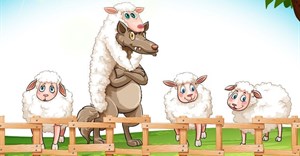Trending




 Sabre EMEA 2024 Awards: Razor PR, Retroviral top SA agenciesDanette Breitenbach
Sabre EMEA 2024 Awards: Razor PR, Retroviral top SA agenciesDanette Breitenbach
Elections 2024
Native advertising is all about deception
On the US satire site, The Onion, which mockingly calls itself "America's finest news source", there is a gushing and partisan tribute to Ariel Sharon, the Israeli leader who died this week. You have to get to the last of 12 slides to discover it is sponsored.
On the site of the journalistic standard-bearer, the New York Times, you will find an article on professionals who choose to work from home. At the top of the page is a note saying the page is sponsored by Dell, with its logo. The story is framed in blue to differentiate it from ordinary news material.
In all of these cases, the content can be mistaken for regular news or features, and might be seen as just part of the run of the paper or site. Indeed, that is what the sponsor hopes for.
Going native
The public relations value is embedded deeply in what is made to look like an ordinary news story and one often has to look twice to see that the report is there to serve an advertiser. This is what is being called native advertising, increasingly embraced by news media as a way out of their financial woes. "All prognostications for 2014," marketing commentator Rebecca Lieb wrote, "point to native advertising as A Big Thing to watch this year."
Paid editorial content and product placement are not new. It is the reason James Bond now drinks beer and single malt whisky, rather than his traditional martini. And why MasterChef candidates use a particular brand of spices. What is different now is that advertisers are producing editorial material that serves their interests and packaging it as genuine news reporting.
Even serious news media are starting to allow it, breaking down the traditional barriers between editorial and advertising, meant to insulate journalists from advertisers. Let's make no bones about it: The purpose is deception, in the hope the reader will invest the content with the credibility and authenticity of a news report.
And now the practice is being embraced by some editors, who are being forced to think and behave more like publishers, worrying about selling adverts rather than serving readers.
Under pressure
It is easy to understand why this is happening, given the financial pressures on all news media to find new ways to pay for the expensive business of quality journalism. Desperate for new revenues, one can even anticipate some media starting to ask brands to pay for mentions in news reports: we will not hear that the president drove into the countryside, but that he powered his Mercedes-Benz over difficult terrain. It won't be that the film star was sipping a cold drink during the interview, but a cool, crisp Coke.
Nobody is doing it because they want to do it. Editors and journalists are living with it because they are under pressure. Some publications are developing rules that at least ensure that they meet a minimum standard of transparency when they do it. But that defeats the point: The advertisers do not want it to be obvious.
Even if it is done transparently, the practice has major implications for journalism quality. What will readers make of it when they find a report one week criticising something and then a paid-for report the following week taking the opposite view (as happened recently with one of our local papers)? Will petrol or energy companies be allowed to sponsor stories - made to look balanced and fair - that question climate change? Will pharmaceutical companies be able to pay for portraits of patients thriving on their drugs, and underplaying the costs and dangers?
I fear that this will cause audience confusion and the short-term revenue gains will be offset by a long-term loss of credibility and authenticity. News operations may be tempted to sacrifice the trust of their audience for quick profit.
And that will not help anyone.










